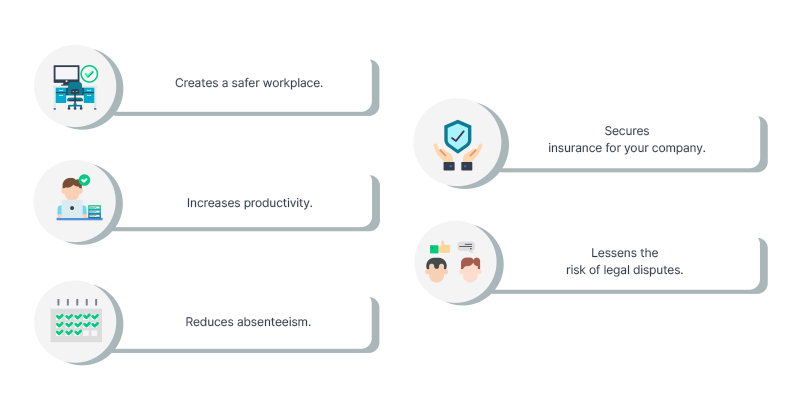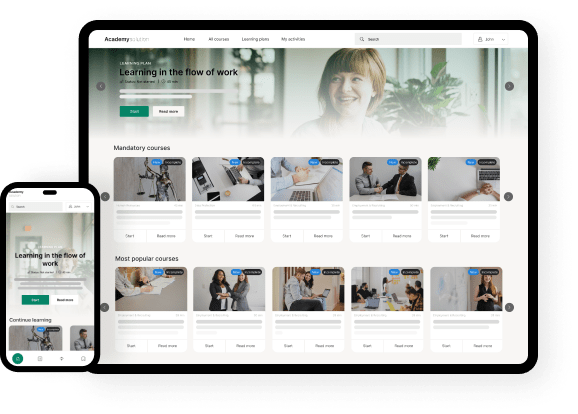The greatest obstacle to a successful compliance training program are goals that are not realistic. Executives fall prey to designing trainings that don’t match the right policies or laws that their company needs to emphasize.
Organizations grow tired because their program simply lacks concrete results. Nevertheless, even if compliance training sounds “costly,” its benefits will still outweigh setbacks if done the right way.
What is a compliance training?
Compliance training is a formal training program that aims to educate employees about essential policies and laws. These laws are those that apply to their job function or industry. While these policies are often job or industry-specific, they can come from the government.
Why conduct this program?
Companies need to train workers to help them work with a high sense of professionalism. Teaching basic company policies will prevent poor conduct across the organization. This, in return, will promote healthy governance. But while compliance training relates to risk management most of the time, it has other benefits:

What are the common types of compliance?
The nature of your industry reflects the type of compliance program you need. For example, staff working in areas where risks are high, (e.g. factories and industrial sites) need training for workplace safety.
In addition, here are the common types of compliance training:

Start SMART with Your Compliance Training
As mentioned earlier, the success of a compliance training depends on how you set out your goals and objectives. In order to attain the best results, your program must be specific, measurable, achievable, realistic, and time bound. What does this mean?
Specific
There is a great chance that your compliance training program will be completed if your goals are specific. For you to have specific goals, keep these questions in mind:
- What courses should the program have?
- Who among the employees should be required to take the training?
- When will the training start?
- Which partners should we hire?
- How long should the program last?
You can create direction to your compliance training if you respond to these questions. It will also let you set limitations that would minimize errors as you move forward.
Measurable
Your company must not only meet certain process requirements. One of the goals of your training program is to make sure that it will bring tangible results. (e.g. reports) Measuring the success of your compliance training program can be tricky. However, it’s not impossible with the use of modern tools like a Learning Management System or LMS.
What makes an LMS a powerful tool? It can do the following:
- Advanced Analytics: With advanced analytics, an LMS helps you keep track of employees’ training progress including those who are underperforming.
- Seamless Certification: Using an LMS lets you use pre-designed certificate templates. You can send these certificates online upon course completion. At some point, your employees will need to renew their certificates. Good thing, an LMS allows you to set an expiration date and automatically reassign a course.
- Automated Reporting: Reporting is everything in any compliance training program. If you want to know how training is faring, try an LMS that automatically generates reports. Maximizing as many data as you can creates a clearer picture of your program’s performance. It also provides better insight about what else should be added, removed, or enhanced in the process.
Achievable
Achievable goals help motivate your employees. These kind of goals cause resilience since you inspire learners to reach a certain milestone. In order to set these goals, create reward systems. Remember though to match these goals to your employees’ roles and capabilities. In doing so, try to ask these questions:
- Has anyone else done before?
- Can they complete these goals with the resources and time they have?
- Are there limitations or constraints beyond their control?
- How can these be addressed?
Relevant
Goals are relevant in a sense that tools and resources are job-specific and could function as intended. Try to align your goals with your company’s risk profile. For example, you might need to ask yourself, does an anti-harassment awareness training outweigh the need to administer other compliance trainings?
Time-bound
Any work has a specific timeframe. Goals that are time-bound have deadlines that your employees need to meet. If you’re not able to set a specific timeframe, trainees might lose their motivation and sense of urgency. Time should prompt your employees to act and respond.
Modernize your Compliance Training Program
Now that you’ve set up SMART goals, it’s time to modernize your approach. As mentioned earlier, using an LMS can help you measure your success. You can do this if you have an advanced, automated reporting tools with a helpful certification system. However, an LMS can do more than automation and managing certificates.
By positioning yourself as the main author of the program, you have all the liberty to be creative. Of course, you should not lose track of your SMART goals. As to how an LMS can help deliver a seamless training experience, here are its advantages:
- Ease of content management: information about certain laws and regulations are intricate matters that evolve over time. To keep abreast of these changes, you need to store your content a single repository and and update them if possible. Using an LMS helps facilitate helps you accomplish this kind of task.
- Personalization: e-learning courses can be tailored based on specific needs and purposes. To personalize content, use an LMS to allow learners to adapt to their training environment. (e.g. encouraging self-paced learning.) Through an LMS, you can deliver content using using various media and interactive learning activities like video presentations and gamification features.
- Digitized learning content: Administrators and educators can save valuable resources and money by digitizing learning content. Choosing e-learning over face-to-face training results to quicker learning sessions. By also making digital contents available, learners have the chance to access and review their lessons anytime they want. This process, thus, accommodates learners’ needs. And to keep note, courses are accessible anywhere with the use of devices such as smartphone, laptop, or tablet.
You just learned the importance of a SMART compliance program and the benefits of incorporating an LMS in the process. While using an LMS in your compliance program might appear a tough shell to crack, it’s easier if you have us as your consultant. Let us assist you with your compliance training program by offering a top-notch LMS solution that will bring dramatic changes in your existing compliance training program.


